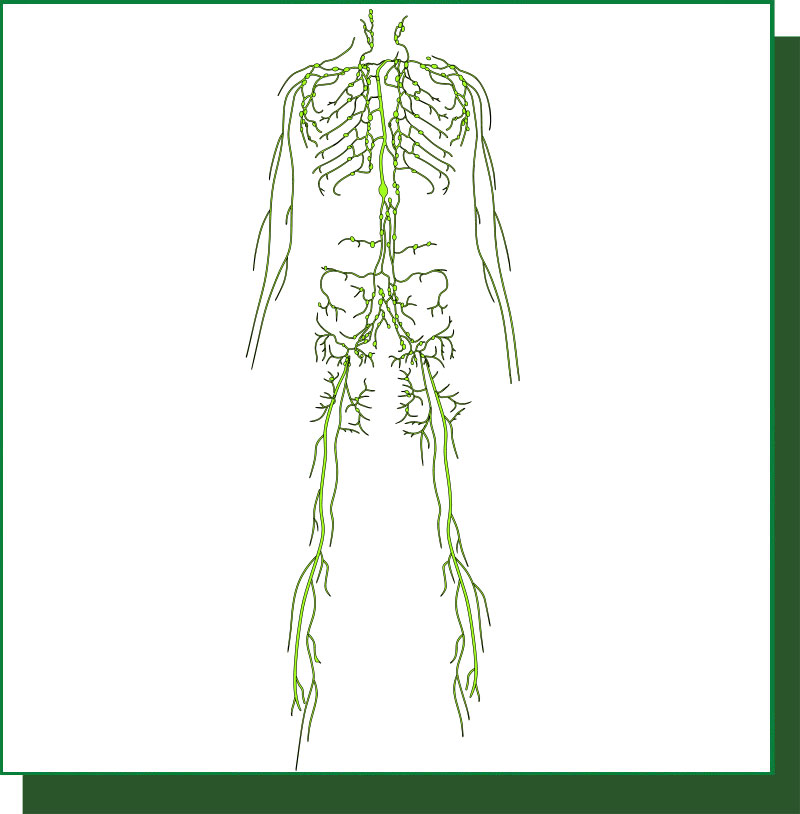Understand
Lymphatic Function
Comprised of lymph fluid, capillaries, vessels, nodes, and organs, the lymphatic system is separate from, yet supports the vascular, endocrine, and nervous systems. With roughly 600 lymph nodes strategically located throughout the body, the lymphatic system – the body’s immune powerhouse – is responsible for filtering and circulating 2+ liters of lymph daily. Lymph transports proteins, hormones, lipids, hydration and waste throughout the body.
Lymph HEALTH
Stagnation in lymphangions creates a saturation burden within the surrounding tissue that presents as misleading mystery symptoms.
Contrarily, scar tissue becomes dry and adhesive, acting as a roadblock for all fluid attempting to pass. When lymph can no longer flow through its designated pathways providing hydration to surrounding tissue, range of motion and performance become limited.

Lymph FLOW
Lymph bathes the interstitium, the extracellular space between the vascular, muscular, nerve and organ structures. Unlike the two-way cardiovascular system, which relies on the heart pump for blood circulation efficiency, the lymphatic system is one-way and relies on lymph vessels and nodes for lymph fluid circulation. Lymph is inherently more susceptible to circulation inefficiency than blood and therefore requires manual stimulation if stagnant.
Lymph STIMULATION
MMLD manually facilitates lymph filtration and circulation. MMLD systematically increases and decreases lymphatic pressure throughout the body to optimize tissue health, improve mobility, and boost immune function. The intricately designed lymphatic system is a powerful protector for the internal fluid environment of the entire body and must FLOW!

“The lymphatic system is the most likely system in the human body to be misunderstood physiologically, underestimated in significance, and disregarded diagnostically.”
Rebecca Mailloux, Clinical Director
ANGION | MMLD Founder